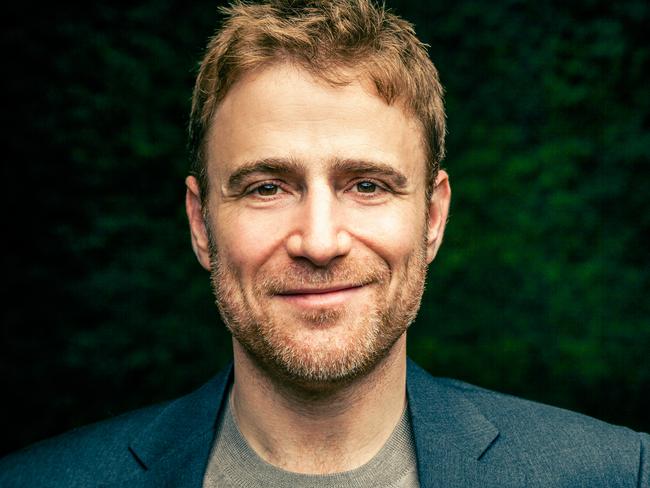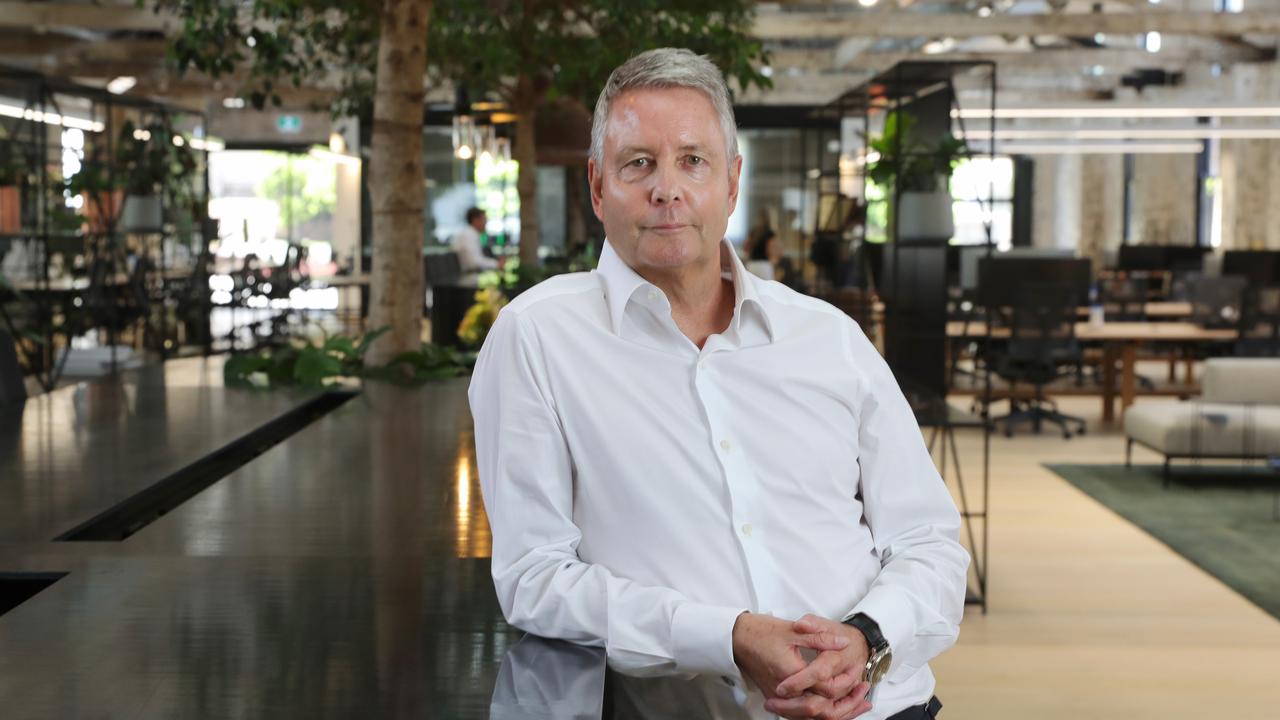The company that could kill off email
LIKE the cockroach, email will never quite die. But these failed video game developers may come the closest to killing it off for good.

Business Technology
Don't miss out on the headlines from Business Technology. Followed categories will be added to My News.
IT’S BEEN around since 1979, yet we are still addicted to email— for work, at least.
But Slack, the insanely successful messaging start-up now even used by the likes of NASA, may be the company that kills off the outdated technology for good.
“Ten years ago you might have emailed your friends, but now you use iMessage, SMS, Facebook Messenger, WeChat, WhatsApp, Line — you have different tools that you use for talking to different people,” said Cal Henderson, Slack’s co-founder and chief technology officer.
“That hasn’t really come to the business space, and Slack is to some extent taking what’s happened in the consumer space and making a business product out of it.”
Rather forcing people to communicate via dreaded ‘reply all’ email chains, Slack is a messaging app that combines instant messaging, email, file sharing and group chat into a single interface that syncs across all devices.
More than anything, it resembles a chat program, with the bulk of activity taking place in laid-back group ‘channels’, labelled with Slack’s Twitter-style hashtag logo: #accounting, #sales, #cats.
Business teams set up channels to discuss projects, deals, deliveries, financials— and more light hearted topics.
“Our office has a Burger Club Monday channel, so you’ll come in on Monday and see 50 reviews of burgers,” said Dave Budge, executive creative director at advertising agency Isobar.
“Burgers aren’t the most productive thing, so some people will mute the channel, but it has enabled that culture of complete and open communication in the business.”

Henderson, who developed the service out of the ashes of a failed video game along with chief executive Stuart Butterfield and fellow co-founders Eric Costello and Serguei Mourachov, said Slack was “following what’s already happened in the consumer space”.
Speaking to news.com.au at the launch of the company’s first Australian office in Melbourne this morning, Henderson explained that Slack allowed co-workers to merge their preferred modes of communicating on a single platform.
“When we talk to companies and say what were you using before, they usually answer ‘nothing’, by which they mean they email some people, and SMS some other people, and these people are on Google Chat, and these people are on Skype,” he said.
“That’s kind of what every company, whether they’re small or large, has adopted as they’ve moved away from just using emails.
“Slack is a product that allows you to bring all of those things together. You have one tool to contact people, whether they’re on mobile, whether you want to message them directly that they’ll get immediately, or you want to send them a longer-form piece that they’ll read tomorrow.”
The Melbourne office, housed in the heritage Carlton Brewery site, joins San Francisco, New York, Vancouver, British Columbia and Dublin, and will create 70 local jobs.
PRODUCTIVITY BOOST
According to Slack, teams that use the product report a 32 per cent increase in productivity, a 49 per cent reduction in emails and a 25 per cent reduction in meetings. Eighty per cent say it improves team culture and transparency.
Employees at jobs website Seek have sent one million fewer emails over the 15 months the company has been using Slack.
“It’s been valuable in helping teams get the right information to the right people in an automated way,” said Seek head of infrastructure Ken Shepherd.
Slack integrates with nearly 300 individual services such as Twitter, Dropbox, ZenDesk and Skype to tie everything together.
A FAST-GROWING ‘UNICORN’
The company behind the fast-growing business application is a so-called ‘unicorn’ — meaning it has a $US1 billion ($1.3 billion) valuation.
After raising $US340 million ($445 million) in funding from investors including Google Ventures, the company is now valued at $US2.8 billion ($3.66 billion). It boasts $US64 million ($84 million) in annual revenue.
Since launching at the start of 2014, it has grown to 1.5 billion messages a month with 2.3 million daily active users, including tens of thousands already in Australia at companies including Seek, Telstra, the AFL, CSR and REA Group.
The speed with which businesses have adopted the platform surprised even its founders, but Henderson said the idea was inevitable.
“If it wasn’t us today, it would have been somebody else around the same time,” he said.
The combination of the rapid rise of consumer messaging apps, and the adoption of cloud-based software-as-a-service (SAAS) products such as Gmail meant the conditions were ripe, he said.
“This is the last generation of human beings to have experienced life both before and after the internet,” said Butterfield. “This isn’t going away.”

Bizarrely enough, Henderson and his co-founders have created not one, but two successful products out of failed video game projects. “I would definitely describe myself as a failed game developer, and at this point twice failed,” said Henderson.
The first game, called Game Neverending, flopped in 2002. But the in-house image and video hosting platform they had used during the game’s development would go on to become Flickr, which the team sold to Yahoo! in 2005 for an estimated $US35 million ($46 million).
The second game was called Glitch. After four years of development, that flopped as well. But the internal messaging service the team developed to communicate while working on the game would go on to become Slack.
“We spent four years on Glitch but we were unable to realise our vision,” Henderson said.
“And also by the time we were four years in and had 50 or 60 people at the company, we’d committed all of that capital, we realised we couldn’t make a game that would make enough money that it would ever make sense for how much we poured into it.”
A LONG, SLOW DEATH
Henderson says he doesn’t think email will disappear entirely.
“It will be a long time before email disappears entirely, if ever,” he said. “It’s the cockroach of the internet — it’s indestructible. It’s not very good but it does work for everything. So we’re not aiming to destroy email.
“What we’re aiming to do with Slack today is replace internal communications. When you’re talking to outside vendors or customers, that’s very difficult to shift away from email, because everyone has email, it’s the lowest common denominator.”
While popular among the younger crowd, one market Slack has had a tougher time convincing is the likes of financial services. The head of technology at one New York investment firm recently told Fast Company he would be wary of using Slack for anything sensitive.
“I like Slack’s ease of use, I like the file sharing and the searchability,” he said.
“But in its current format, Slack is unlikely to find traction at a firm like ours. As things stand, my impression is of a fuzzy, feel-good millennial hipster tool rather than a buttoned-down, conservative and justifiable platform.”
Henderson says security is a key issue for Slack. “A lot of regulated industries, say finance and healthcare, have very different requirements in different countries. As we get into those markets, we’re building features specifically for those kinds of customers,” he said.
“On the financial services side, a lot of companies have existing workflows around email and use vendors like Global Relay and Smarsh, which take a copy of every email sent and then archive it so it’s legally discoverable.
“We integrate with those services as well.”
So would he every consider having another crack at making a video game?
“The first failure we could blame on the environment,” Henderson said.
“We were in Canada, it was post-WorldCom and Enron, it was post-dotcom crash, it was a terrible time to raise money, especially for anything tech, especially video games, especially in Canada with a team that had no track record.
“This time around we had everything going for us really. We’re just not good at making video games. I think that was probably our last attempt.”
He thinks, then adds: “It turned out okay though.”
Originally published as The company that could kill off email



